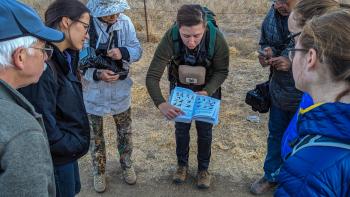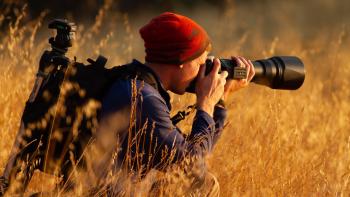Open Space Wet Weather & Winter Guide

Rain brings new growth, running streams, creeks and salamanders, but with a changing climate it can also bring flooding–leading to slippery conditions out on the trails.
With longer, hotter periods of drought throughout the year, soils deteriorate, decreasing their ability to absorb water. Pair this with the shorter, heavier periods of rain during the rainy season, and the result is more severe flooding events. Open spaces like those throughout the Santa Clara Valley serve as a critical buffer to surrounding communities, reducing residential flood risk and promoting a healthy watershed.
As these open spaces get slippery and muddy during the winter, it’s important to exercise caution when hitting the trail. Here are some tips to help you navigate nature during wet winter weather:
- Let the trails dry. Give the trails a day or two to dry out after a storm before you head out. This makes for safer hiking for you and reduces potential for rutting and damage to the trails. A good rule of thumb for equestrians/bikers on the trail - if the mud is sticking to your shoes, tires, or your horse’s hooves sink into the mud, it’s probably best to turn around!
- Check conditions before you go. After a winter storm, trails may be closed especially for equestrians and mountain bikers, due to unsafe conditions. Check our website for notices about trail closures.
- In case of emergency, tell family or friends where you are going and when you expect to return before you hit the trail. Cell coverage is unreliable in the preserves.
- Wear sturdy boots that can stand moisture and mud. You might want to also bring an extra pair of shoes for driving.
- Bring hiking poles to help keep you upright - keep the “snow cups” on the end of the poles for balance.
- Pack snacks or lunch, especially if you’re hiking with children. Fatigue and hunger can make it harder to pay attention, which is important on potentially slippery footing.
- Dress in layers. Weather on the preserves can change quickly.
- Don’t forget to bring a hat and sunscreen. Don’t let the cold temperatures and cloudy skies fool you – the sun takes no rest days!
- Bring a small backpack with extra clothes to change into in case you slip and fall.
- Pack a simple first aid kit. Always carry medications you may need in case of emergency– including inhalers.
- Carry extra water. Drinking water is not available in the preserves, and while you may not feel as thirsty in cold weather, hydration is still important.
- Be especially careful to stay on trails to avoid damaging sensitive vegetation or disturbing wildlife, especially species like newts that are more active this time of year.
Learn more about our open space preserves on our Preserves page, and check out our New Visitors page to learn more about how you can prepare for your next adventure.



